Although some of you may have already seen my ditch kit posted in the
Mag Pouch Survival Kit contest over at Zombie Squad, I thought Iíd post it here for your review as well. Iíd really like your feedback so be sure to post your suggestions to help me improve my kit.
This little 3-day kit is something that I keep within my reach in the car, and bridges the gap between the
EDC items that I usually carry in my pockets and my GHB, which is always stored in the trunk. Whenever I'm out in the woods, this kit serves as a self-contained supplement to everything else that is carried in my pack, and could also serve as an impromptu E&E kit if I ever needed to drop my main pack and run.
Paragonís Wilderness Ditch Kit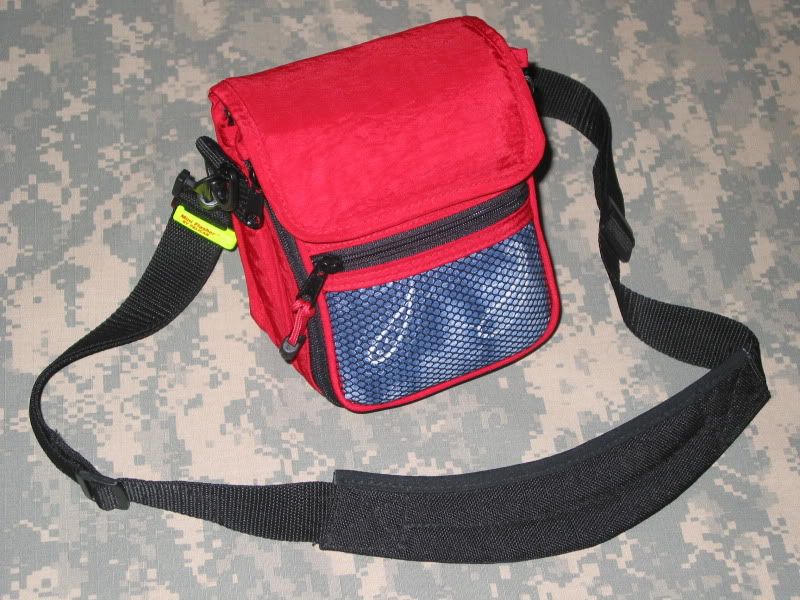
I chose to build this kit is around a sweet little case that I found in a thrift shop a couple of years ago. It measures approximately 5 1/2Ē x 6Ē x 3Ē for a total volume of 99 in^3. In addition to the mesh zippered pocket on the front, the case has two large compartments under the main flap, with two additional ďslitĒ pockets on either side for organizing smaller items. There is a small zippered access on the bottom, and a MOLLE type snap on the back that can be used to secure the kit to a belt. The adjustable padded shoulder harness on it now is an upgraded one that I added for increased durability and comfort.
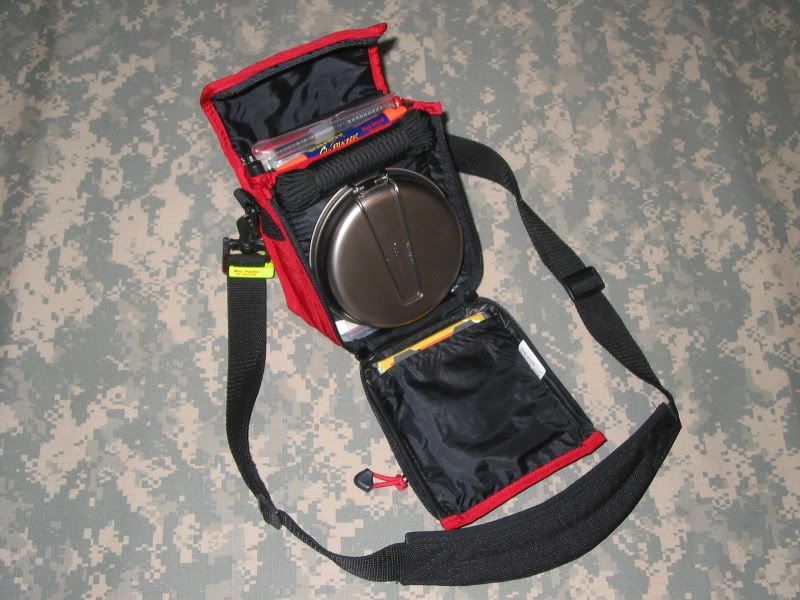
One of the nicest features of this case is that the front compartment unzips down both sides offering improved access to the items stored inside. If you look closely you can just make out the two ďslitĒ pockets toward the bottom. In this photo you can see that I have a 10m (33í) hank of paracord, as well as a Snow Peak 250mL titanium pan for boiling water. In the slit pocket behind the pan there is a small first aid kit, 1L Aqua Pouch, a water purification kit, and a couple of small MRE pouches of peanut butter. In the opposite slit pocket there is a rain poncho, Esbit emergency stove, 6í of duct tape, vacuum sealed toilet paper, and three packets of Starbucks VIA instant coffee. More on these items in a bit...
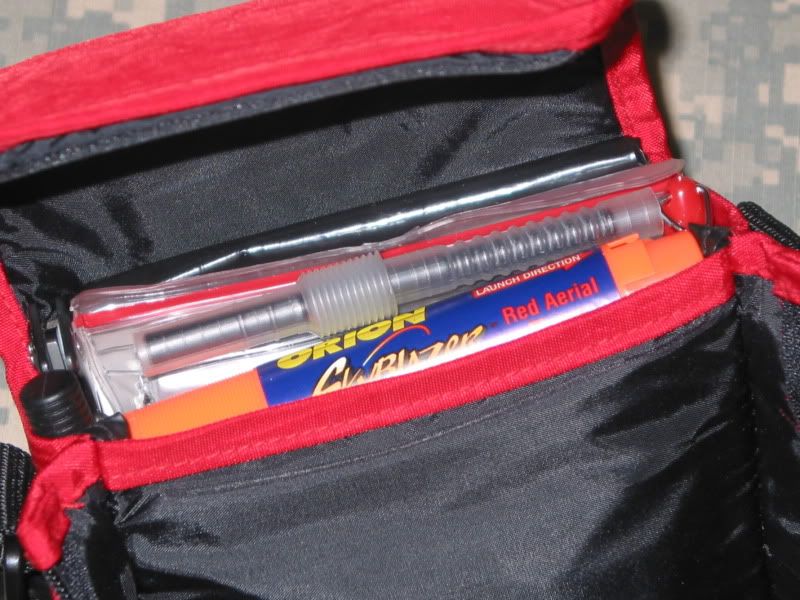
In this photo youíre able to see a Gerber 3Ē serrated Paraframe and LMF fire starter on the left side of the main compartment. You can also see a very large trash can liner (36Ē x 84Ē) across the back of the pack, a modified
Doug Ritter Personal Survival Pakô, a couple of Orion Skyblazer aerial flares, and a collapsible straw for the Frontierô water filter (with a Fisher space pen stowed inside). To the right is a red mini Sharpie marker. Below these items (not visible in this photo) is an AMK 2-person heatsheet emergency blanket, an
AMK Thermo-Lite hypothermia prevention cap (much smaller, yet more effective than a knit watch cap) various antibacterial and bug repellent towelettes, a pair of post-mydriatic sunglasses, a BCB Commando wire saw (the only type that Iíve ever found that actually works), a large Tyvek envelop (15Ē x 23Ē), and a silcock key for water procurement in an urban environment.

Stored within the titanium pan are most of my smaller items including a mini Bic lighter (with an o-ring to prevent accidental discharge), 3 Esbit fuel tablets, 3 tinder quik fire tabs, 3 pieces of 2Ē x 2Ē charcloth, 2 wet fire tabs, fire steel and hacksaw blade striker, contractorís pencil sharpener (for making wood shavings) a small piece of 3M Scotchbrite (to clean the pan), a sewing kit, mini multi-tool, 4 screwdrivers, 2 compressed hand towels, Petzl e-LITE headlight, Silva compass/thermometer, 3 Centrum vitamins, various OTC and Rx medications, and an episcope.
An episcope? What's an episcope?

An episcope is a precision optical device featuring a 3x adjustable telescope, 5x / 10x / 15x loupe, and a 30x microscope. Think of it as a mini monocular.
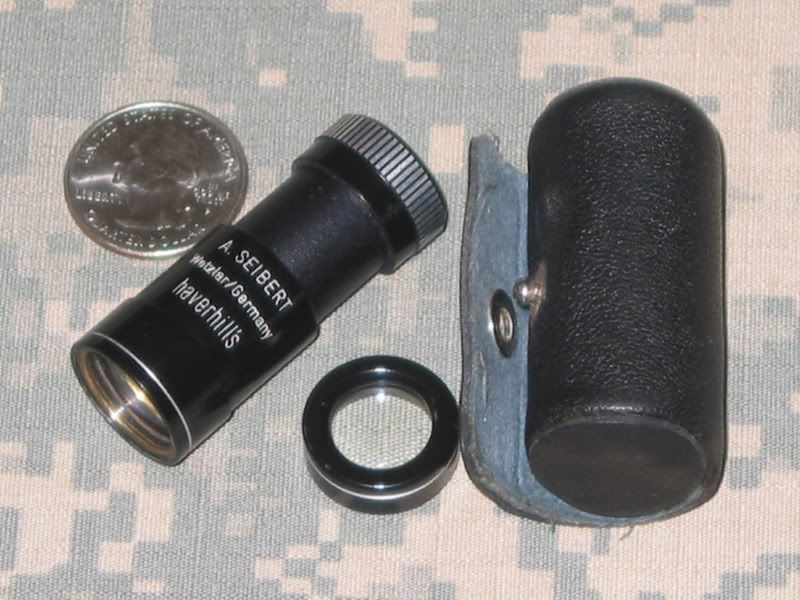
Hereís another shot of it with a quarter next to it for scale (it measures 2Ē overall). I have a
Brunton Echo (7 x 18) in my GHB, as well as a set of binoís in my BoB, and I find that I use them quite a bit. I really wanted something to extend my range of vision in this kit as well, although size is obviously one of the more important considerations, so this worked out well.

Anyone who has ever spent any time in the woods can appreciate the
physiological effect that a hot cup of coffee or tea can have on moral on a cold, damp morning. The compact size of the kit obviously means that the pan has to be pretty small (8 oz capacity) although it actually works out well.
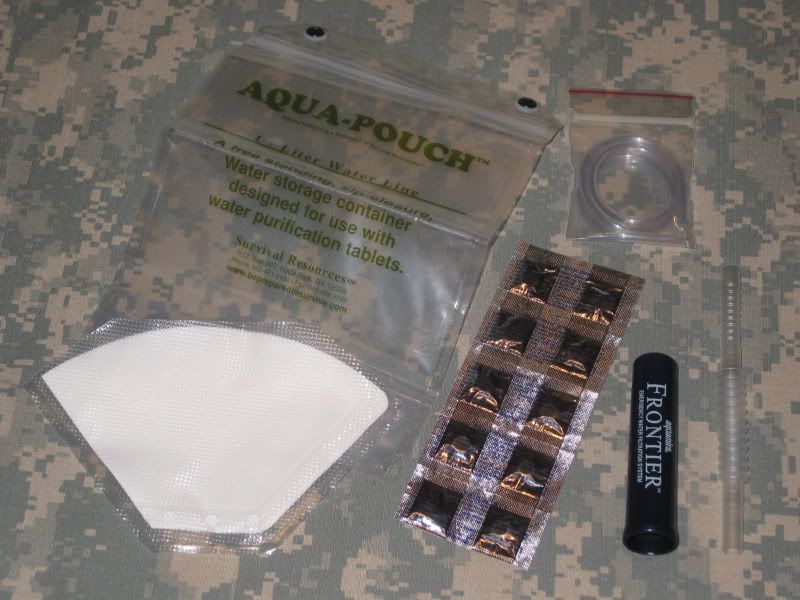
Perhaps more practical than the pan for water purification is the 1L Aqua Pouch and Micropur tablets, or even the Frontier straw. There is also a 1L Survival Resources emergency water bag in the Ritter PSP, along with six more Micropur MP1 tablets. The FDA tubing (18Ē) is not only great for reaching drinking water that may be located in deep crevices, but is great for directing oxygen to the base of kindling when starting a fire.
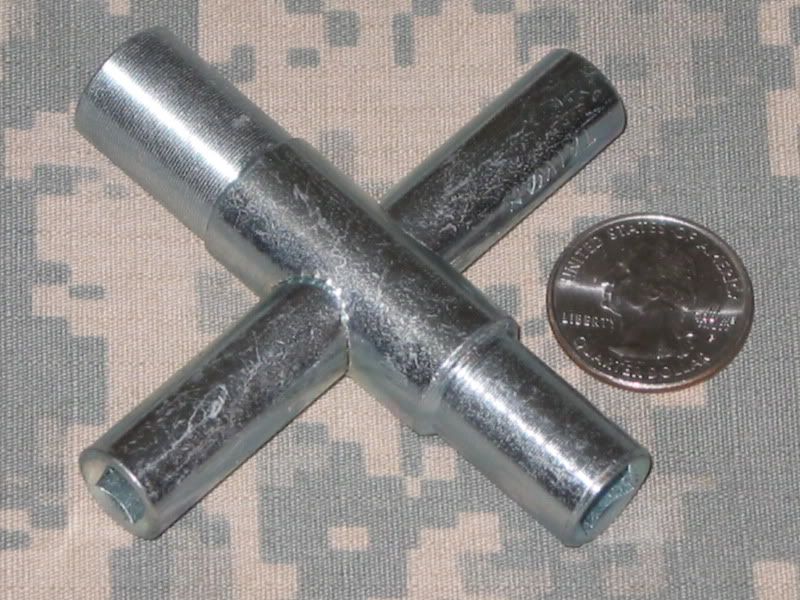
Although completely unnecessary in the wilderness, a 4-way faucet wrench is indispensible in an urban survival environment. Like most of us, I spend 97% of my time in an urban environment, so having a silcock key greatly increases my chances for procuring potable water.
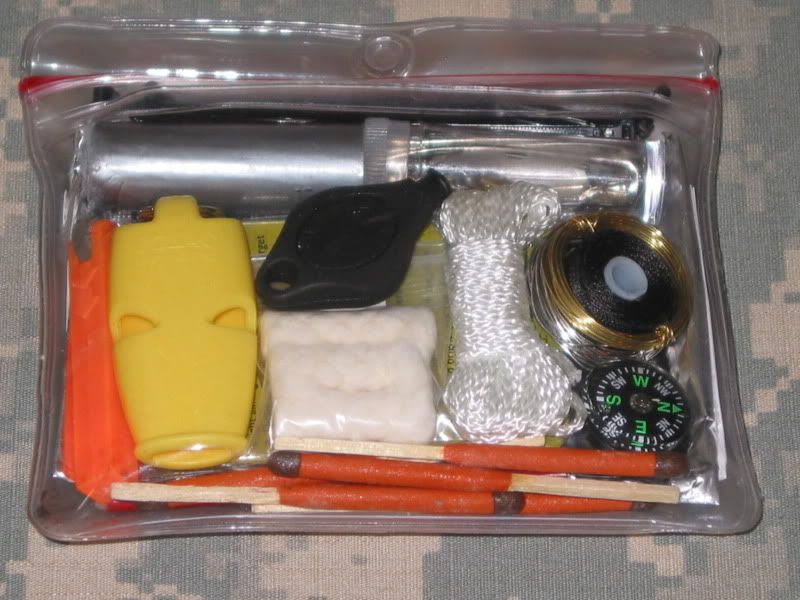
The foundation of all of my kits is the Doug Ritter Personal Survival Pakô. Although this PSK is very comprehensive, Iíve added a Photon Freedomô Micro flashlight, 6 REIģ Stormproof matches & striker, 25í of monofilament fishing line (10 lb test), a Survival Resourcesô emergency water bag (1L), 6 Katadynģ Micropur water purification tablets, 6í of brass snare wire (24ga), and 6 T&B heavy duty cable ties.
Continued Below...